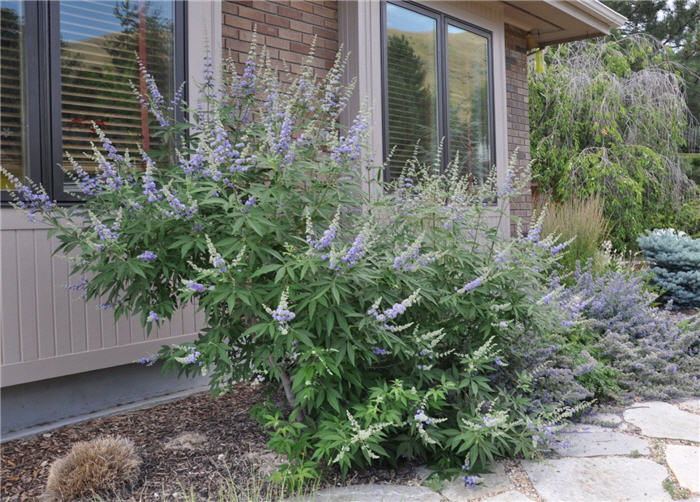| Botanical Name: Vitex agnus-castus | |
| Common Name: Chastetree |

-
Anatomy
-
Culture
-
Design
Plant Type
Shrub
Height Range
6-12', 12-25'
Flower Color
Lavender, White
Flower Season
Summer
Leaf Color
Grey Green
Bark Color
Grey
Fruit Color
n/a
Fruit Season
n/a
Sun
Full
Water
Low
Growth Rate
Moderate
Soil Type
Sandy, Clay, Loam, Rocky, Unparticular
Soil Condition
Average, Poor, Well-drained, Dry
Soil pH
Neutral
Adverse Factors
n/a
Design Styles
Mediterranean, Ranch, Seascape
Accenting Features
Fragrance, Showy Flowers
Seasonal Interest
Summer
Location Uses
Background, Patio
Special Uses
Cut Flowers, Shade Tree
Attracts Wildlife
Butterflies
Information by: Stephanie Duer
Photographer: Normans/Frommer/Devine
Photographer: Normans/Frommer/Devine
-
Description
-
Notes
In spite of the 'tree' in its name, Chastetree is a decidous multi-stemmed shrub. It grows slowly to 10 to 15 feet tall and as wide; it is broad, so place accordingly. It has beautiful clusters of fragrant lilac or white flowers in summer which is striking against the gray green, slender, pointed leaves. Butterflies love this shrub. Thrives in heat.
Listed as being hardy to Zone 6 or 7 (Dirr), so plant in a location sheltered from cold winter winds; it may not be well suited for the bench areas, though I know of a few that are thriving up in those elevations. Requires full sun and well drained soil. In our winters, Chastetree may die to the ground; in milder winters, it may loose all its foliage but the branches may survive. Prune out any branches that did not survive the winter once the shrub has broken it's dormancy in the spring.